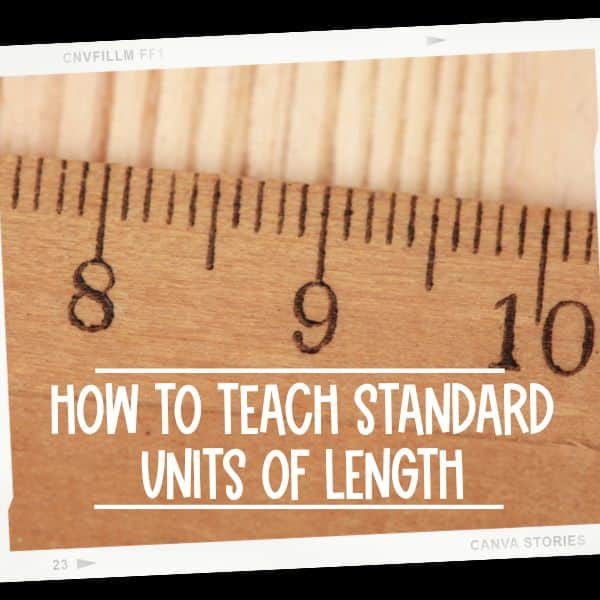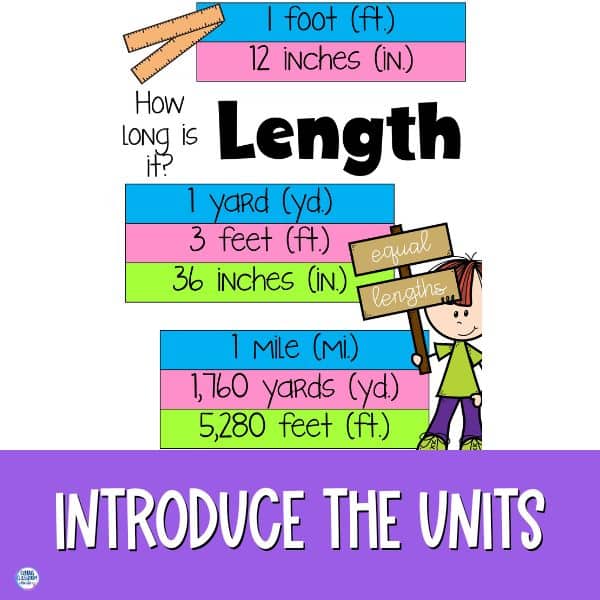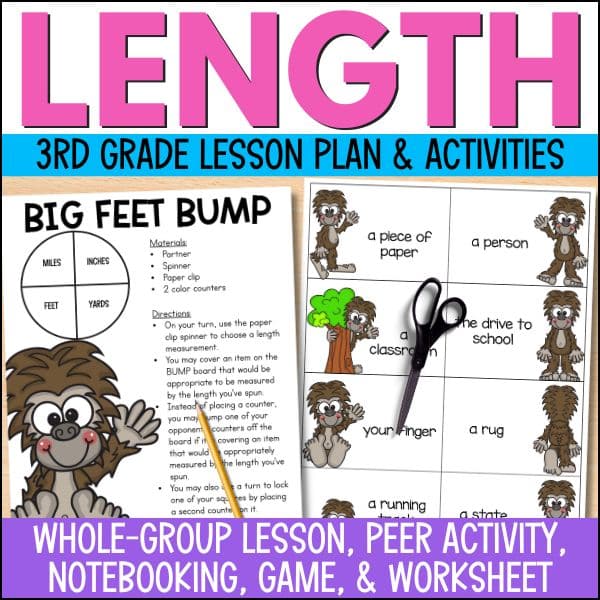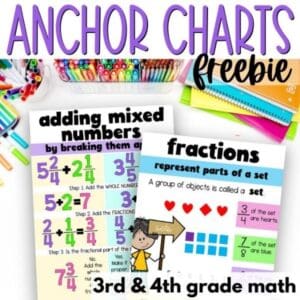If you’re teaching third grade and diving into the standard units of measurement for length, you’re in for a fun ride! Today, I’m sharing one of my favorite lesson plans to teach this concept with hands-on activities that will keep your students engaged and learning. Let’s break the Big Foot themed lesson down step by step!
1. Introducing the Standard Units of Measurement for Length
We start with the basics: a standard American school ruler! I show my students a ruler and explain that one side is for measuring in standard customary units (inches, feet, yards, miles), while the other is for metric units (centimeters, meters, etc.). Today, we’re going to focus on the standard side. You might also see these referred to as customary units of measurement.
I make sure to emphasize that different standard units of measurement for length are used for different types of sizes. For example, if we’re measuring something small like a pencil, we’ll use inches. But what if we want to measure something bigger, like the length of the classroom? That’s where feet come in!
2. Exploring Inches, Feet, Yards, and Miles
Next, it’s time to get our hands dirty—figuratively, of course! I let the students explore and measure various objects around the room using inches and feet. It’s always fun to see them guessing how many inches or feet certain objects are!
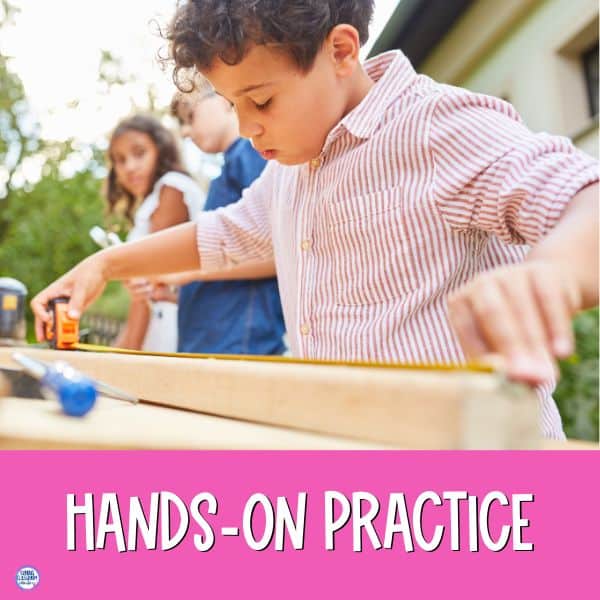
After they’ve gotten the hang of measuring smaller things, I ask them, “What about bigger objects, like the length of the gym?” I introduce the yardstick for this purpose. Then we go even further and discuss miles—perfect for measuring large distances like the length of a road or a marathon. I make sure to go over the equivalent measures between inches, feet, yards, and miles so they understand the relationships between the units.
3. Group Activity: Standard Units of Measurement for Length Stations
Now comes the fun part! In each corner, I hang signs for different units of measurement for length: inches, feet, yards, and miles. Each student gets a card with the name of an object on it (like a book, a desk, a car, etc.). Their task? They need to decide which corner they should go to based on the object’s size and which unit of length would be most appropriate for measuring that object.
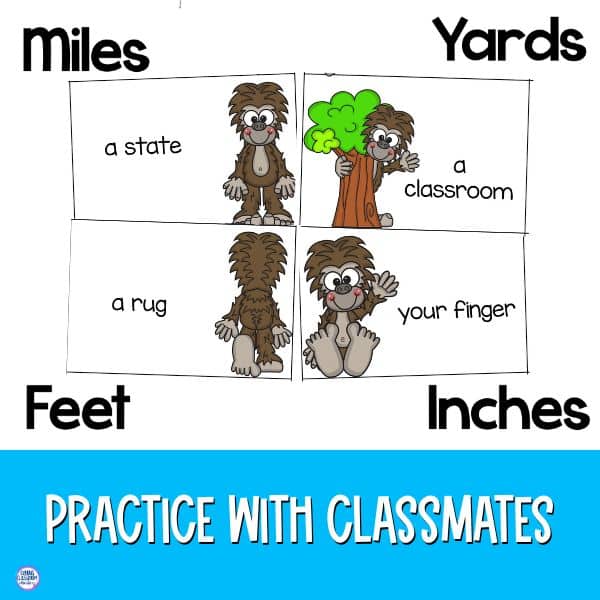
Once everyone is in a corner, I let the students discuss their choices with their group. It’s a great chance to check for accuracy and clarify any confusion. Afterward, they swap cards with three different classmates and repeat the activity. It’s a great way to reinforce the lesson and get them moving around the room and relieve some of their wiggle energy!
4. Big Foot Pockets Interactive Notebook Activity
Let’s add some creative flair to the lesson with an interactive notebook activity I like to call Big Foot Pockets. Students will cut out the title, conversion chart, and pockets from the printable provided. They glue the pockets into their notebooks (gluing only along the bottom and sides so it forms a “pocket”).
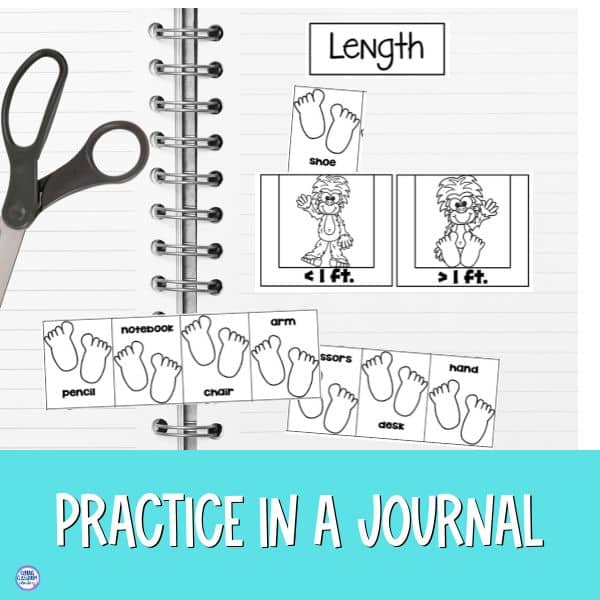
For each object listed on their cards, students will measure it using a ruler and write the length in inches. Then, they sort the cards into the appropriate pockets based on whether the length is greater than or less than one foot. This hands-on activity is not only fun, but it also helps reinforce the concept of converting between inches and feet.
5. Big Feet Partner Game
Time use their new knowledge about standard units of measurement for length for a little friendly competition with Big Feet Bump! I’ll explain the game setup: students partner up, and each group has a paper clip spinner and a BUMP board. The spinner determines which length (inches, feet, yards, or miles) they’ll use for the turn. Then, using a counter, they cover an item on the BUMP board that’s an appropriate match for the length spun.
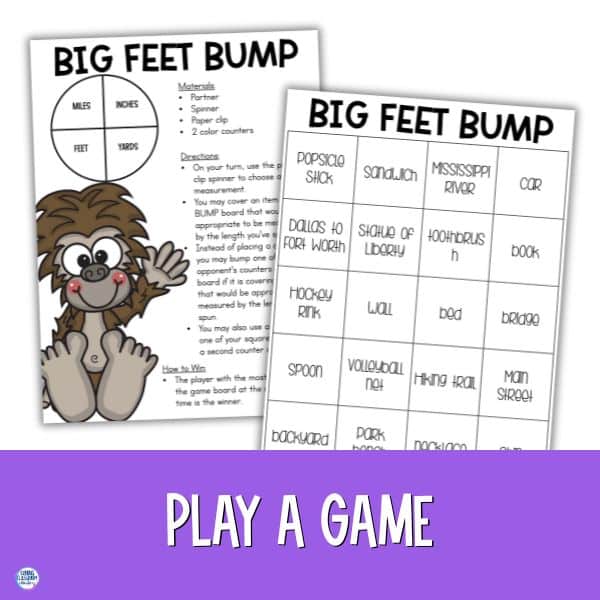
But wait, there’s a twist! If an opponent has a counter on an item that’s a better match for the length spun, they can “bump” that counter off the board! They can also use a turn to lock a square by placing a second counter on it. It’s a fun way to reinforce what they’ve learned about the standard units of measurement for length, all while encouraging some friendly competition.
6. Worksheet for Practice
Finally, to wrap things up and solidify their learning, I assign a worksheet that includes a variety of questions and problems related to standard units of measurement for length. This helps students practice on their own and gives them a chance to review everything they’ve learned.
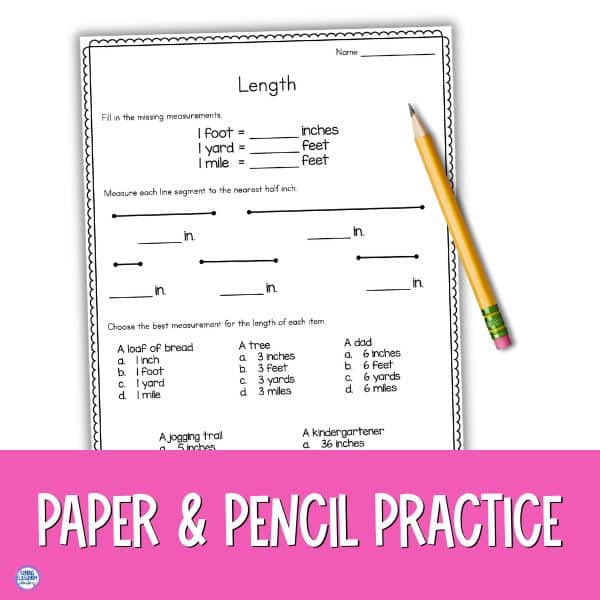
Download the Full Resource
If you’d like to try this standard units of measurement for length lesson in your own classroom, I’ve got you covered! You can download the full done-for-you resource, which includes printables for the Big Foot Pockets activity, BUMP game materials, and more! Check it out here for all the materials you need.
I hope this lesson plan helps make teaching standard units of measurement for length a fun and interactive experience for your students! You can also grab a whole unit for standard units of measurement here!
Get 4 Free Resources Every Month!
You read that right! I’ll share an easy-to-use and engaging upper elementary resource straight to your inbox every week along with a fabulous classroom idea or two to make teaching a little less work and a lot more fun!
Here’s the first freebie to get you started!
CLICK HERE TO GRAB YOUR FIRST FREE RESOURCE TODAY!

